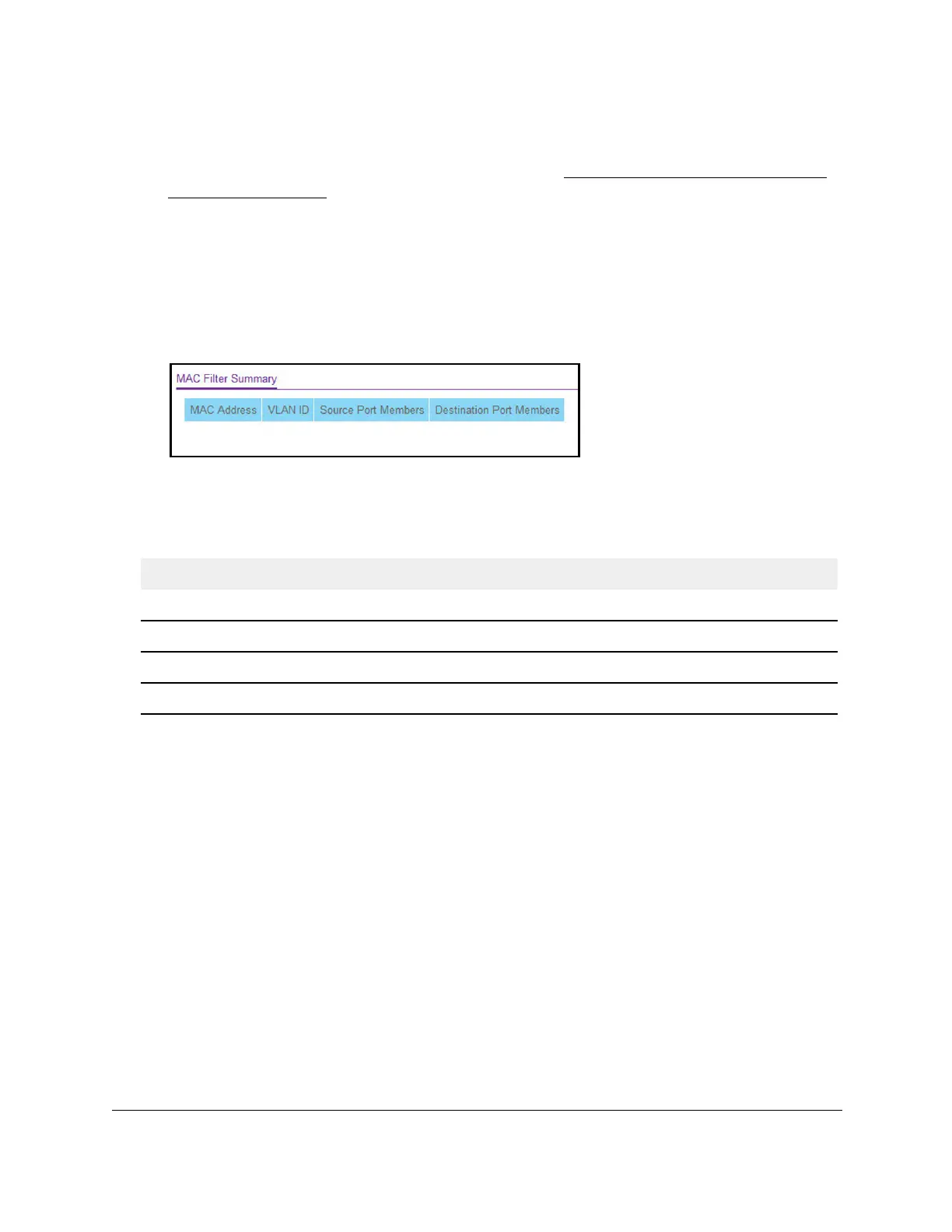S350 Series 24-Port (PoE+) and 48-Port Gigabit Ethernet Smart Managed Pro Switches
Manage Device Security User Manual252
3. In the address field of your web browser, enter the IP address of the switch.
If you do not know the IP address of the switch, see
Discover or Change the Switch IP
Address on page 12.
The login window opens.
4. Enter the switch’s password in the Password field.
The default password is
password.
The System Information page displays.
5. Select Security > T
raffic Control > MAC Filter > MAC Filter Summary.
6. To refresh the page with the latest information about the switch, click the Refresh button.
The following table describes the information displayed on the page.
Table 59. MAC Filter Summary information
Field Description
MAC Address The MAC address of the filter in the format XX:XX:XX:XX:XX:XX.
VLAN ID The VLAN ID used with the MAC address to fully identify packets you want filtered.
Source Port Members The ports to be used for filtering inbound packets.
Destination Port Members The ports to be used for filtering outbound packets.
Configure Storm Control Settings
A broadcast storm is the result of an excessive number of broadcast messages
simultaneously transmitted across a network by a single port. Forwarded message
responses can overload network resources, cause the network to time out, or do both.
The switch measures the incoming packet rate per port for broadcast, multicast, unknown,
and unicast packets and discards packets if the rate exceeds the defined value. You enable
storm control per interface, by defining the packet type and the rate at which the packets are
transmitted.
Configure Global Storm Control Settings
The global storm control settings apply to all ports. After you configure the global settings,
you can specify storm control settings for one or more ports.

